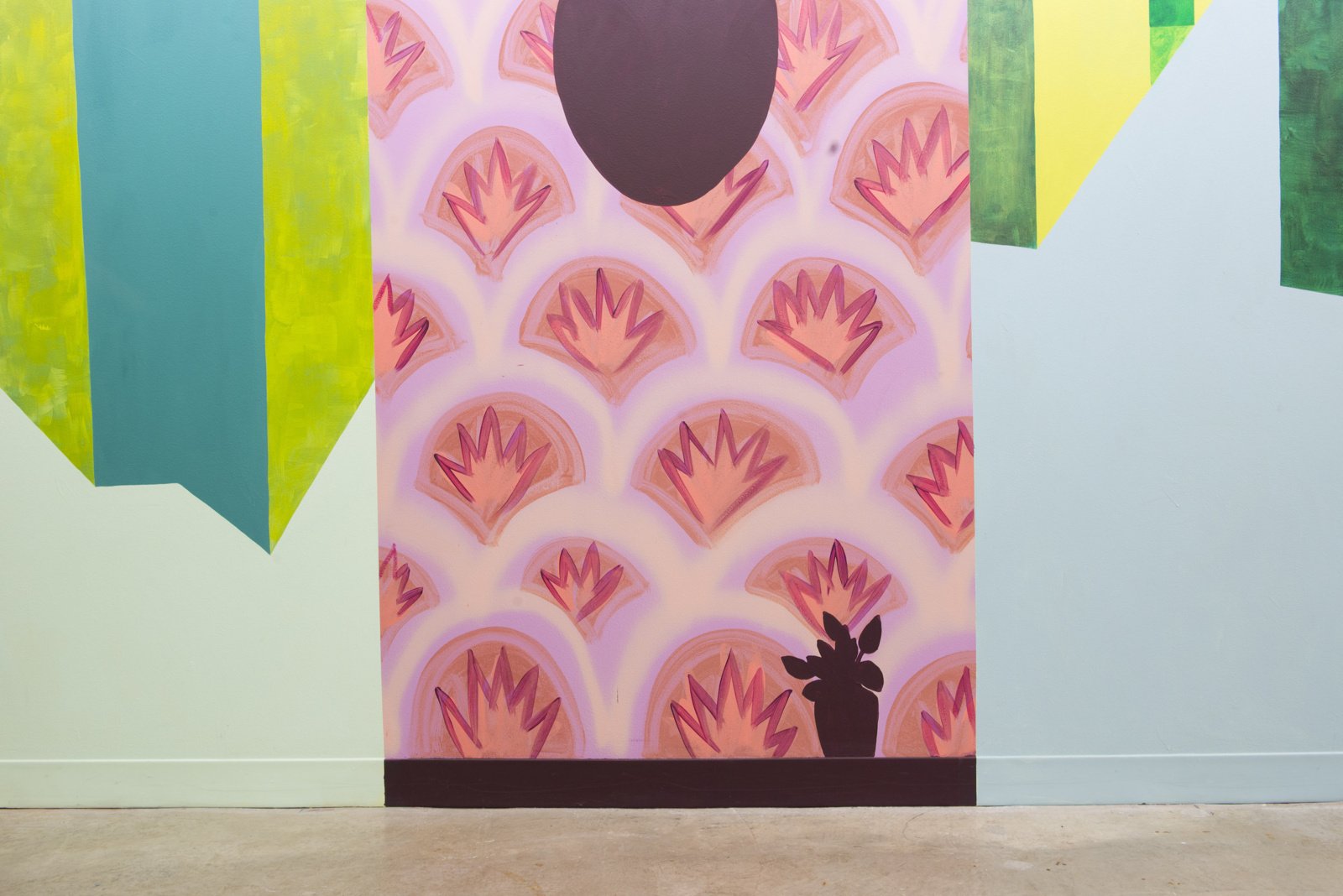An Interview with Annie May Johnston
Our Founder, Liz met Annie May Johnston a couple of years ago when she was a visiting artist at the University of Texas at Austin. Annie May was finishing up the final year of her MFA there and was lumped with the visiting artist airport pick-up!
Since graduating, Annie May has moved back to San Francisco and is continuing to create beautifully colorful, spatially ambiguous pieces that are both theatrical and familiar. She kindly answered some of our questions below.
When did you start printing?
During my last year of my undergraduate degree, I decided that I no longer wanted to go to medical school and instead I wanted to focus on the arts and making. So I graduated, moved to LA, and settled on a silkscreen class at Otis College of Art and Design. I quickly fell in love with the medium and also simultaneously struggled to pull a full cohesive edition. It felt like with every decision or layer that I made, there was an alternative and equally valid layer or color or move that I could test out. I later jumped on an opportunity to work as an assistant printmaker in a Parisian atelier, Michael Woolworth Publications. This print shop is known for its lithographic editions and large-scale prints. I learned to pull editions for other artists but still was uninterested in making one for myself, always leaning towards a unique piece or monotype.
Where do you make your work? Home studio? Shared print space?
I make my work at a little studio in the Mission in San Francisco. When I first moved out here, I was lucky to be a resident at Kala Art Institute, a Berkeley space focused on print. For a printmaker, I’m very private when I’m making work, so although I love the environment of print shops and open studios, I get my best work done late at night when nobody is around.
How do you see your print background informing your more expanded practice?
Warm and cool layer progressions, translucency, repetition, and flatness vs. depth are all important tools I use daily and are essential to printmaking. I additionally think a lot about craft and the decorative arts, both of which have strong links to print.
Even though I typically paint, I use stencils a lot in my work. I also seem to use the paint medium itself more as a drawing and layering tool rather than a paint tool – if that makes sense – which I’m sure comes from my printmaking background.
Who would you love to collaborate with?
Studio Cromie in Southern Italy does a line of patterned clothing called Sangue that is a lot of fun. Not only would I enjoy creating patterns to go on clothing but I would also love to collaborate with someone (I have not found that someone yet) and do wallpaper for homes or bathrooms.
Where are some of your favorite spaces in the Bay Area for contemporary art or design?
San Francisco’s recycling center, Recology, has an artist program that allows the artist-in-residence to work with the materials at the plant, which I think is pretty cool. Other great spaces Include Johansson Projects, Root Division, Minnesota Street Project, and Kala Art Institute. There are also a multitude of artist-run spaces that are doing great work including City Limits Gallery, Royal NoneSuch Gallery, and Irving Street Projects. And of course the print studios - Magnolia Editions and Crown Point Press. I think I listed too many!
What are you working on at the moment?
This question has taken me the longest to formulate because things have recently changed in my work. Previously, my entire focus was on interior domestic spaces, and now it has expanded to include other environments I can say I’m thinking about labyrinths, aquariums, theater and opera sets, and my bathroom shower curtain. My work leans towards maximalism, a way of making that can question the distinction between form and space as well as the logic of construction. I strive for a feeling of alienation in my locations, and now I’m thinking about not only physical spaces but mental and “faux” environments as well.
I have a show up until the end of July at the Mystic Hotel in downtown San Francisco, and it has been nice to see my work with other domestic (yet staged) interior spaces. I recently saw a great show at the Jewish Museum in New York called The Arcades. In it, there was a quote from Robert Smithson that is relevant to my current exploration - “The mirror itself is not subject to duration, because it is an ongoing abstraction that is always available and timeless. The reflections, on the other hand, are fleeting instances that evade measure. Space is the remains, or corpse, of time, it has dimensions.”





